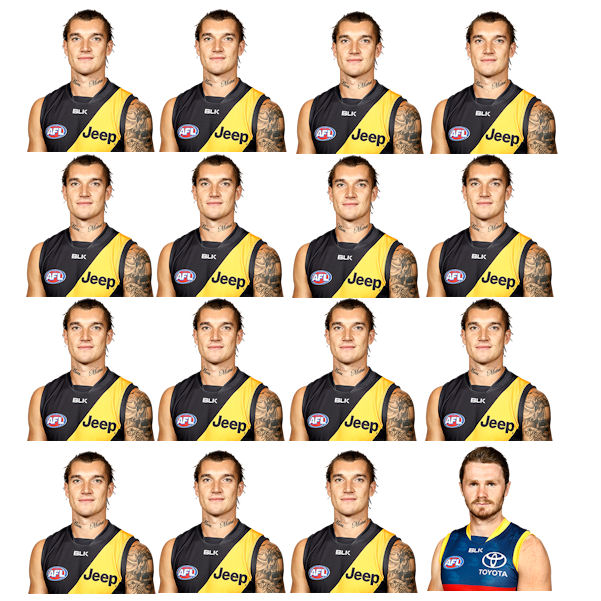
It’s that time of year when are teams are being “finalised” as we trade in more and more premiums and inevitably the statement is made that everyone’s team now looks the same. But how true is this statement? I decided to investigate and had a look at the teams in our DTTalk Writers League to see how similar our teams really had become.
Looking at the Players
The first thing which caught my attention was that there were 137 different players selected across the 16 teams. Additionally every single team had at least one player that wasn’t in any of the other 15 teams. One team even had 8 players that weren’t in any other team, which certainly surprised me. There were 54 completely unique players in total, an average of 3.4 completely unique players per team.
The converse of this, which was not surprising, was that every team had players in common with every other team. The most similar teams had 16 shared players whilst the least similar teams had only 5 shared players. Across the league there was an average of 11 shared players, meaning that generally 50% to 70% of the players on the field in a head-to-head match would be different.
Is It Good To Be Different?
The two teams which were most similar on average to the other teams currently have respective league ranks of 4th and 13th, while the two teams which were the most unique currently have respective league ranks of 9th and 5th. Matching the respective league rankings for each team against their level of uniqueness found that there was a 11% correlation between the two, in favour teams with more similar players to have a higher rank. Statistically though 11% is a very small correlation and not considered significant. It’s almost like flipping a coin to determine ladder position.
Everybody Here Loves You
Dustin Martin was the single most popular player among the DTTalk writers, featuring in 15 of the teams, conforming to the fact that he is also the most owned player in the competition. Dane Swan, Robbie Gray and Jack Newnes weren’t far behind though, each being owned by 14 teams, again aligning to the fact that they are respectively the 2nd, 3rd and 10th most commonly owned players in the competition.
Rounding out the popular players were Kane Lambert with 12 selections, David Mundy and Tom Rockliff with 11 selections and Luke Parker with 10.
They’re My POD
Many of the 54 players to be only found in one team were there for reason’s beyond our control. For example, I was the only coach with Kamdyn McIntosh still in my squad and that’s not because I think he’s a keeper. But there were plenty of meaningful players only appearing once.
Players averaging 100 or higher, who could help tip the balance in a close game, who only appeared in a single team were David Armitage, Patrick Dangerfield, Andrew Gaff, Jack Macrae and Mark Blicavs. Plus there were high scoring non-midfielders including Steven Motlop, Brodie Grundy, Corey Enright, Josh Gibson and Dylan Roberton who only appeared once. The teams with these players are getting an advantage every week.
This is before looking at the star players who were only selected a couple of times. I could fill up half a page with them, but as an example the competition leading Jack Steven is only in 3 teams in the league.

Got No Friends
Whilst nearly every high scoring player in the competition was selected in at least one team, there were two notable exceptions. For some reason not a single team has selected Leigh Montagna, who is the 4th highest averaging player at 113.2, and no one has selected Dan Hannebery, who is 8th with a 109.9 average. While Montagna is somewhat understandable after the games he missed at the start of the season, Hannebery has played every game and must just be disliked for some reason.
So… Are The Teams Similar or Not?
It appears that they’re really not similar at all. There is a average of 37% overlap between any two chosen teams meaning that there are far more differences than similarities. As an analogy, imagine going the football with 30 people each week and each week 11 of them are the same ones you saw last week. You might get sick and tired of seeing Dusty every week, but there’s lots of other different people there to focus on should you choose.
Finally, given that the most similar teams in the league shared 16 players currently, if they were to trade out two different players and trade in the same players every week for the rest of the season then they could have 30 identical players by Grand Final week. They’d still probably pick different captains though.



























Recent Comments